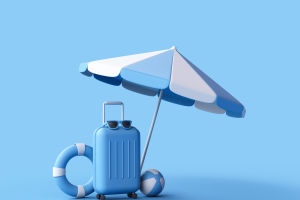Hey Lykkers! Welcome to Hong Kong, a dazzling metropolis where futuristic skyscrapers meet ancient traditions! Whether you're visiting for its iconic skyline, vibrant markets, or breathtaking nature trails, Hong Kong offers a world of excitement.
To help you make the most of your journey, here are some essential travel tips to ensure a seamless, memorable trip to this dynamic city.
1. When to Visit Hong Kong?
Hong Kong is an all-year-round destination, but timing your visit can make a big difference:
Autumn (October to December): This is arguably the best time to visit. The weather is pleasantly cool, averaging around 19°C to 24°C (66°F to 75°F), and you’ll enjoy clear skies—perfect for sightseeing.
Spring (March to May): Mild temperatures (around 17°C to 26°C, 63°F to 79°F) make this a popular time to visit. However, be prepared for occasional showers and humidity.
Summer (June to September): It’s hot, humid, and typhoon season, with temperatures soaring to 31°C (88°F). If you can handle the heat, you'll find great deals on accommodations.
Winter (January to February): While not freezing, winters can be a bit chilly, especially in the evenings, with temperatures dropping to around 12°C (54°F).
2. Getting Around the City
Hong Kong boasts one of the most efficient public transport systems in the world.
Octopus Card: Get yourself an Octopus Card! This smart card can be used for MTR (subway), buses, trams, and even in convenience stores. It's rechargeable and saves you the hassle of buying tickets for every trip.
MTR (Mass Transit Railway): Fast, reliable, and well-connected, the MTR is your best friend for getting around Hong Kong. It covers most tourist attractions and operates from 6:00 AM to 1:00 AM.
Trams (Ding Ding): For a fun and budget-friendly way to explore Hong Kong Island, hop on one of the historic Ding Ding trams. Fares are flat-rate and cost just HK$2.60 (USD 0.33), making it an affordable way to get around.
Star Ferry: Want stunning views of Victoria Harbour? The iconic Star Ferry offers a scenic and cheap (around HK$2.70, USD 0.35) ride between Tsim Sha Tsui and Central or Wan Chai. Don’t miss it, especially at night when the city lights up!
3. Exploring Local Cuisine
Food is an integral part of the Hong Kong experience, and the city is a food lover's paradise. From street food to Michelin-starred restaurants, there’s something for every palate.
Dim Sum: You can’t leave Hong Kong without trying dim sum! Head to places like Tim Ho Wan (starting at HK$15 for a dish, USD 2) or Maxim’s Palace for a more upscale experience.
Street Food: For adventurous eaters, head to Mong Kok or Temple Street Night Market. Must-try items include egg waffles (HK$25, USD 3.20), fish balls (HK$15, USD 2), and the local favorite, stinky tofu.
Cha Chaan Teng (Tea Houses): These local diners serve comforting and affordable Hong Kong-style dishes. Order a Hong Kong milk tea, pineapple bun (no pineapple inside, but still delicious!), or a char siu rice meal for under HK$50 (USD 6).
4. Where to Stay?
Accommodation in Hong Kong ranges from luxurious hotels to budget hostels. Here are some options based on your travel style:
Luxury: The Ritz-Carlton or the Four Seasons in Central will offer you spectacular views and 5-star service, with prices starting at around HK$3,000 (USD 380) per night.
Mid-range: Stay at Hotel ICON or The Mira Hong Kong in Tsim Sha Tsui, where you’ll get modern amenities and a convenient location for around HK$1,200 (USD 150) per night.
Budget: For those on a budget, Yesinn @ YMT or Hop Inn in Tsim Sha Tsui offer clean, comfortable accommodations with dorm beds starting from HK$200 (USD 26) per night.
5. What to See and Do?
Hong Kong offers a blend of urban energy and tranquil natural escapes. Here's what you shouldn't miss:
Victoria Peak: Take the Peak Tram (HK$52, USD 6.70 one-way) to the top for an unbeatable view of Hong Kong’s skyline.
Tian Tan Buddha (Big Buddha): A visit to Lantau Island to see the 34-meter-tall Buddha statue is a must. The Ngong Ping 360 Cable Car (HK$235, USD 30) offers a scenic ride up to the site.
Temple Street Night Market: For a lively and authentic experience, head to this bustling night market in Kowloon. Bargain for souvenirs or grab some local street food.
Hiking: Love nature? Try the Dragon's Back Hike or explore the MacLehose Trail for incredible views of the coastline and countryside.
6. Currency and Budgeting
Hong Kong uses the Hong Kong Dollar (HKD). Credit cards are widely accepted, but you’ll want to have some cash on hand for small shops and local markets. Here's a rough idea of daily travel costs:
Budget traveler: HK$300-500 per day (USD 40-65)
Mid-range traveler: HK$800-1,500 per day (USD 100-190)
Luxury traveler: HK$2,500+ per day (USD 320+)
7. Shopping Tips
Hong Kong is a shopping haven. From luxury brands in Causeway Bay to quirky finds in Sham Shui Po, you’ll find something for every budget. If you're hunting for gadgets, make sure to compare prices before buying, and don’t hesitate to bargain in street markets!
8. Language and Communication
While Cantonese is the primary language, English is widely spoken, especially in tourist areas. Most signs are bilingual, so getting around is easy for non-Cantonese speakers.
Hong Kong is an exhilarating mix of old and new, where ancient temples sit alongside gleaming skyscrapers. If you’re sipping tea in a bustling cha chaan teng, enjoying the night view from Victoria Peak, or exploring the tranquil hills of Lantau, Hong Kong will captivate you with its energy, history, and charm. So Lykkers, Make sure to plan well and follow these tips to experience the very best this incredible city has to offer!


